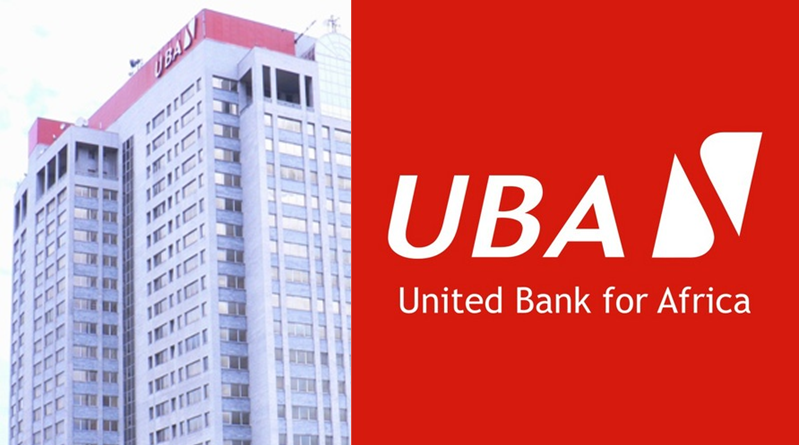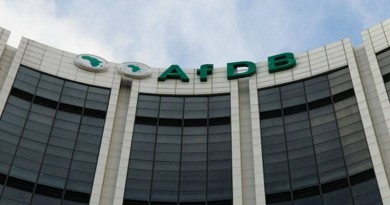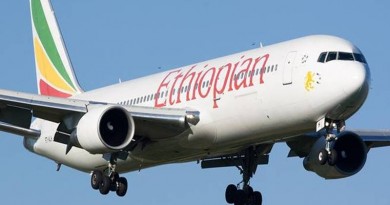UBA Long term Outlook affirmed ‘B’, by Fitch Rating
Fitch Ratings has affirmed United Bank for Africa (UBA) Plc’s Long-Term Issuer Default Rating (IDR) at ‘B’. UBA’s National Short-Term IDR has also been upgraded to ‘F1+(nga)’ from ‘F1(nga)’, reflecting the bank’s continuing solid funding and liquidity profile, which is a rating strength. The Outlook on the bank is Stable.
The IDRs and senior debt ratings of UBA are driven by its standalone creditworthiness, as reflected in its ‘b’ Viability Rating (VR). The VR considers UBA’s exposure to the Nigerian volatile operating environment, but also the bank’s healthy profitability and adequate capitalisation, which provide reasonable capacity to absorb losses from an economic downturn.
The VR also reflects sizeable non-loan assets, dominated by cash and balances, restricted deposits (mainly cash reserve requirements held at the Central Bank of Nigeria (CBN)) and Nigerian government securities (B/Stable), which together comprised about 29% of total assets at end-1H21 (3.3x Fitch Core Capital (FCC)).
The Stable Outlook reflects Fitch’s view that risks to UBA’s credit profile are captured at the current rating level, with sufficient headroom, under our base case, to absorb the fallout from operating-environment pressures.
The ratings also reflect UBA’s pan-African franchise with subsidiaries in 20 countries outside of Nigeria (with 50% of net income and 35% of assets at end-1H21 coming from the rest of Africa). We believe UBA’s ability to capitalise on business and trade flows and attract deposits across the continent is a competitive advantage relative to the bank’s peer group. UBA is the fourth-largest banking group in Nigeria, representing 15% of domestic banking-system assets at end-2020.
Asset-quality losses have been limited to date and net loans remained low at 32% of total assets at end-1H21. Furthermore, asset-quality metrics improved in 1H21, with the impaired (Stage 3 under IFRS 9) loans ratio falling to 3.5% at end-1H21 (2019: 4.8%). Total reserves coverage of impaired loans also rose, to 95%, the highest among the peer group. Our asset-quality assessment also considers UBA’s lower oil and gas exposure – at 13% of net loans compared with the sector average of 30% – and high exposure to Nigerian government securities.
However, UBA holds a moderate stock of Stage 2 loans (9.6% of gross loans at end-1H21) compared with peers, which are mostly restructured and concentrated to a few borrowers, exposing the bank to event risk. At end-1H21, around 18% of the bank’s gross loans were also subject to debt relief (end-1H20: 15%), broadly in line with the peer group’s.
UBA’s profitability metrics have been consistently strong through the cycle. The bank reported an increase in its operating profit-to-risk weighted assets (RWA) ratio to 6.5% at end-1H21 from 5.4% at end-2020, despite falling asset yields and regulatory limits on transaction fees, and lower transaction volumes, which continue to weigh on non-interest income. Pressure on net interest income was, to some extent, offset by lower funding costs, due to lower interest rates, while loan impairment charges were lower relative to pre-impairment operating income (6%) as asset quality improved. UBA’s geographical diversification provides some cushion to the pressures in Nigeria through the cycle.
Capitalisation is adequate and expected to be under moderate pressure as RWAs are inflated by currency devaluation. UBA’s FCC ratio was a solid 30.1% at end-1H21, reflecting its low risk weight density (end-2020: 32%). The latter results from the highly liquid nature of the bank’s balance sheet – including large holdings of government securities and financial collateral – which provides capital relief. However, leverage is fairly high, as reflected in a tangible equity/asset ratio of 8.7% at end-1H21. The bank’s sovereign exposure is high compared with capital, which constrains the bank’s rating.
Funding and liquidity are a rating strength. UBA’s loan-to-deposit ratio of 47% at end-1H21 reflects a liquid balance sheet, which covers short-term maturity gaps in naira. Local-currency liquidity is ample (regulatory liquidity ratio of 35% at end-1H21), with excess liquidity placed in government securities. Deposits account for 84% of funding and largely comprise stable current and saving accounts.
UBA is not immune to the current foreign-currency shortages in Nigeria and has liquidity gaps at shorter maturities on a contractual basis, resulting in reliance on the stability of domiciliary deposits and loan repayments in foreign currency to meet its own debt obligations. Domiciliary deposits have shown stability over the last crisis in 2016 and have remained inelastic in behaviour in 2020.
UBA’s National Ratings reflect the bank’s creditworthiness relative to that of other issuers in Nigeria and are driven by the bank’s standalone strength. UBA’s National Short-Term Rating is the higher of the two possible options for an ‘A+(nga)’ National Long-Term Rating under Fitch’s criteria, reflecting the relative strength of the bank’s funding and liquidity profile, which reduces the vulnerability of default on its short-term local-currency obligations within Nigeria.




